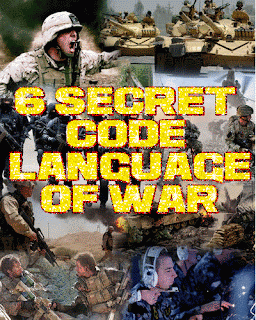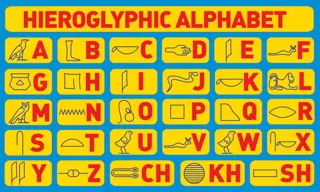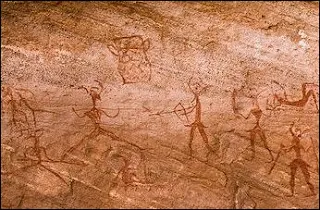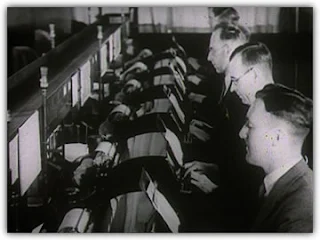This is a list of ancient secret code languages. These are still a part of today's military communication. These languages were used modern wars like World War 1 and 2.
 |
| List Of Ancient Code Languages Used In World Wars Secretly |
Communication between soldiers is an important part of any military strategy. And there are lots of wireless communication systems that functions to establish the communication between forces. But our ancient people were using the same technology before many thousand years ago and that is still a strong base of today's wireless communication system. They were using secret code language which after many years our scientists have been able to decipher and using even today. So below is a list of such ancient secret code languages that were used in today's modern wars like World War 1, Vietnam War and Korean War.
Hieroglyphics
 |
| Hieroglyphics |
The simplest of all writing systems use pictures. These are called pictograms and look like the things they describe- just like many road signs and computer icons today. Writing or carving pictograms is very slow and a lot of work, so people began to use simpler versions of images, such as hieroglyphics. Ancient Egyptian hieroglyphics were used on obelisks, wall paintings, tombs and papyri (documents on a type of paper made from reeds). People used hieroglyphics to show the war. They informed other peoples about upcoming problems through hieroglyphics during the war. They are symbols that represent an object, a sound or an idea. They are not a code: you cannot simply convert an Egyptian hieroglyph into a letter and read it as we read words in a book. People stopped using hieroglyphics in the 1st century AD. From then on, no one could understand them until 1822 when French scholar Jean François Champollion worked out how to translate the text of the Rosetta Stone in the British Museum. A recent hieroglyphics was found on a building at Dos Pilas that shows how the giant war was fought at that time.
Messages through cave paintings
 |
| Messages through cave paintings |
From cave paintings onwards, there have always been ways of conveying information and ideas to other people. Pictographs are pictures or symbols that represent words. Egyptian hieroglyphics are pictographs. They eventually developed into alphabets so that languages could be written down. People have also used signs and flags to communicate with each other and found ways of turning language into codes to send messages quickly. Until inventions such as Morse code, the fastest anyone could send information from place to place was at the speed of a horse. Now electronic messages can be sent around the world instantaneously via e-mail. A recent demonstration of showing wars through pictographs is at rock shelters of Bhimbethka where it clearly indicates that how prehistoric war were fought and few pictographs also shows that how to use pictographs to give signals.
Braille
 |
| Braille |
Braille is a system of raised dots that allows blind people to read by touch. It was invented in the 19th century by a blind Frenchman named Louis Braille. The dots are embossed on to paper, either by hand or using a machine. They are read by moving the fingers across the top of the dots. The reader uses both hands- the right works out the message while the left feels ahead for the beginning of the next line. A skilled Braille reader can understand up to 150 words a minute, which is about half the speed of a sighted person reading ordinary text. The basic unit of Braille is called a cell. It is made up of six dots, which allows for 63 possible combinations to represent letters, numbers and punctuation marks. Even army also used Braille method in war. Charles Barbier who was an Army Artillery Officer modified the code because they needed a way to touch the words than reading, because it is risky to read the words using light in night combat operations. The development of perfect Braille was in progress from 1786 to 1932 when it was adopted by the United States of America and Great Britain.
People Involved in development of Braille
Valentine Haüy
Louis Braille
Samuel Howe
William Wait
Helen Keller
Morse code
 |
| Morse code |
By using Morse code you can send a in a series of dashes. The signal can be sent by sound or by flashing lights - a dash is three times as long a dot. There are five parts to the code: a dot (.), a short gap or pause (between letters), a medium gap (between words) and a long gap (between sentences). Morse was created by and named after American artist and inventor Samuel Finley Breese Morse (1791-1872). He sent the first Morse code message over a wire from Washington DC, to Baltimore, Maryland, on 24 May 1844. It read "What hath God wrought!" An international version of Morse code became widely used to send telegrams by wire from place to place. Once people could send messages by radio transmissions they still used Morse code to keep in touch in situations such as warfare, when clear voice signals were not always possible. Now the original Morse code has been revised into international Morse code and continental Morse code.
Use of Morse code in wars.
- World War 2
- Korean War
- Vietnam War
The Morse code Alphabet
Alphabet code
0 -----
1 .----
2 ..---
3 ...--
4 ....-
5 .....
6 -....
7 --...
8 ---..
9 ----.
A .-
B -...
C -.-.
D -..
E .
F ..-.
G --.
H ....
I ..
J .---
K -.-
L .-..
M --
N -.
O ---
P .--.
Q --.-
R .-.
S ...
T -
U ..-
V ...-
W .--
X -..-
Y -.--
Z --..
Phonetic Alphabet
 |
| Phonetic Alphabet |
You may have heard pilots and soldiers on television and in films using the phonetic alphabet in radio messages. The alphabet is used to spell out parts of a message that might be difficult to recognize in unclear radio transmissions. The version generally used was developed in the 1950s. It is known as the NATO (North Atlantic Treaty organization) Phonetic Alphabet and was designed to be understood and easily pronounced by all NATO members. They chose words that were used in lots of different languages and could not be confused with other common words or those used for another letter. Aircraft and ship crews also use the phonetic alphabet. For example, in the phonetic alphabet "over and out" becomes Oscar Victor Echo Romeo Alpha November Delta Oscar Uniform Tango. You can see the use of phonetic alphabet in modern wars like World War 1, World War 2 and Vietnam War. Royal Navy of England has little bit different version of phonetic language. You may have seen many war movies where soldiers communicate with other through the phonetic alphabet. Phonetic alphabet was used in wars like Kargil war and presently USA operations against Terrorism.
A - Alpha
B - Bravo
C - Charlie
D - Delta
E - Echo
F - Foxtrot
G - Golf
H - Hotel
I - India
J - Juliet
K - Kilo
L - Lima
M - Mike
N - November
O - Oscar
P - Papa
Q - Quebec
R - Romeo
S - Sierra
T - Tango
U - Uniform
V - Victor
W - Whiskey
X - X-ray
Y - Yankee
Z - Zulu
Semaphore
 |
| Semaphore |
In 1791 French inventor Claude Chappe (1763-1805) and his brothers developed a way of signalling called semaphore. They used two wooden arms which could both be set to seven positions. This made a total of 196 combinations, each representing a letter or other symbol. The signalling device was mounted on a high building. It could be seen from a distance by an operator viewing it through a telescope from the next semaphore station. From this, a system of signalling using human arms and flags was developed and used at sea to send information from ship to ship. This system was kept up to the 1960s, even after radio was commonly used to send messages at sea. Semaphore was extensively used in many wars for signaling especially in World War 2. Semaphore was used for visual signaling. Morse and semaphore both were used in World War 2 because wireless technology had reached to its prime at that time receiver were able to capture radio signals and better understand it. So to overcome this risk, naval ships used semaphore and Morse flags.
Sign language
 |
| Sign language |
Everyone makes hand gestures to show certain feelings: you might rub your stomach to show you are hungry, raise your fist as a threat or hold your thumb up to show approval. The most important means of "speaking" by hand gestures is between deaf people. Sign languages for the deaf were first used in 17th-century Europe. In the 18th century schools were set up where national systems of sign language developed. As a result, a number of versions are used around the world with different ways of signing words. Signers use the different finger positions, a variety of hand movements upward, downward and so on and make the signs against certain parts of the body such as the neck, arm and wrist. Both hands are used in the British system, but only one is used in American Sign Language. Sign language is also used in combat operations where soldiers indicate another soldiers through the movements of hands, Head and Eyes. Soldiers use these types of sign language in covert operations and in war as well. They use sign language than the word to word interactions. (LINK 8) Even Homo sapiens also used sign languages. In ancient times tribal people used such sign language when they go for hunting. Since then sign language is in use till today.
